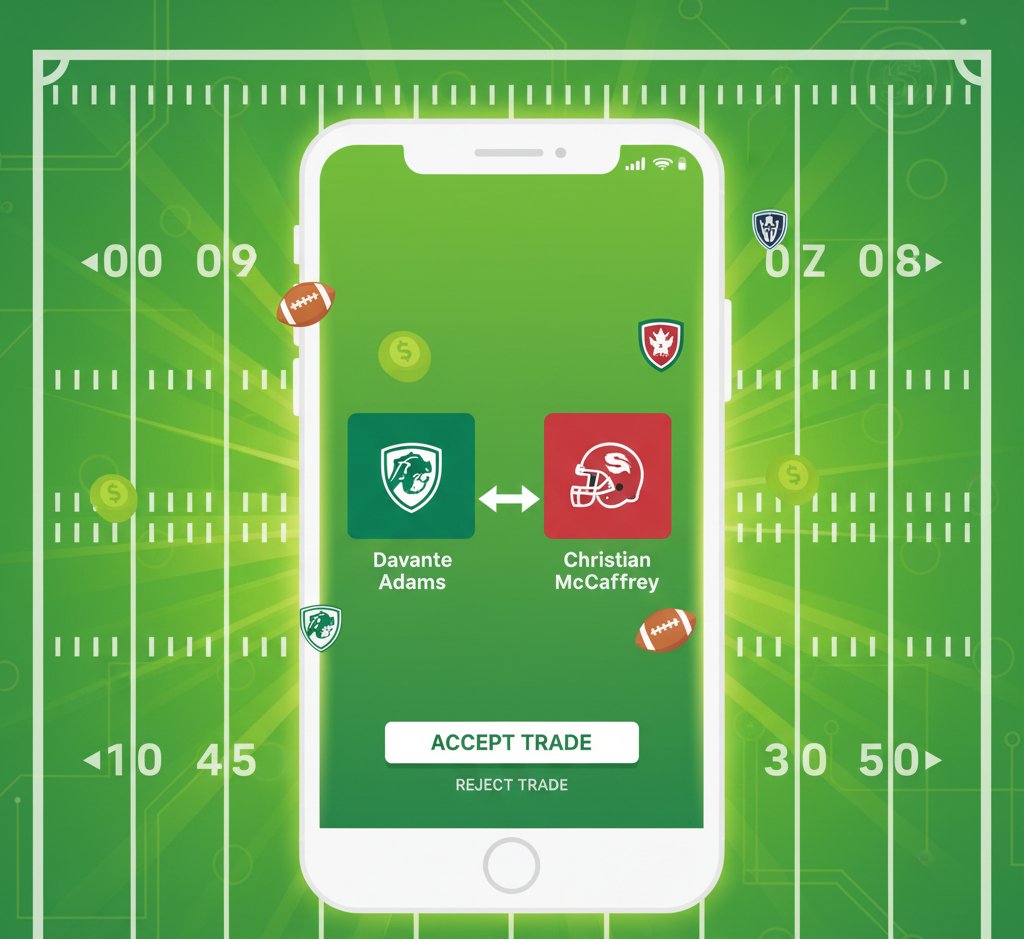Fantasy football is one of the most engaging sports games in the world, and trading players is a big part of the excitement. Many new managers ask: “How do you trade players in fantasy football?” The answer involves understanding your league rules, analyzing team needs, and using smart strategies to maximize value. In this guide, we will break down everything you need to know about fantasy football trades, from the step-by-step process to advanced trade tactics that can help you win your league.
What Is a Trade in Fantasy Football?
A trade in fantasy football is when two managers agree to swap players to strengthen their rosters. The trade could be simple—like one player for another—or complex, involving multiple players and draft picks in dynasty leagues.
Types of Fantasy Football Trades
One-for-One Trade: A straightforward swap (e.g., a running back for a wide receiver).
Two-for-One Trade: One manager gives up two decent players for a single star.
Multi-Player Package: Both sides trade several players to balance their lineups.
Trading helps managers adjust to injuries, bye weeks, and underperforming players while building a stronger team.
Why Trade Players in Fantasy Football?
Trading is more than just making moves—it’s a winning strategy.
Balance Your Team – Fix weak spots by trading excess depth for needed positions.
Sell High, Buy Low – Move players at peak value while targeting struggling stars with upside.
Recover from Injuries – Trades can quickly fill gaps when a starter gets hurt.
Gain Playoff Advantage – Acquire players with favorable late-season schedules.
Stay Competitive – Trading keeps leagues active and more enjoyable.
Without trades, most fantasy football rosters would remain stagnant. Smart deals can completely change your season.
Step-by-Step: How Do You Trade Players in Fantasy Football?
The exact process depends on the platform (Yahoo, ESPN, NFL Fantasy, Sleeper, etc.), but the steps are usually the same.
Step 1: Evaluate Your Roster
Look at your team’s strengths and weaknesses. Do you need a stronger RB2? Are you loaded at wide receiver but weak at tight end? Knowing what you need is the first step.
Step 2: Identify Potential Trade Partners
Check other teams’ rosters. Look for managers who have depth where you lack talent. A good trade helps both sides, so always target someone with the opposite needs of your own.
Step 3: Propose the Trade
Go into your fantasy platform, select the players you want to trade, and choose the players you want in return. Send the offer through the system.
Step 4: Negotiate and Adjust
Most trades involve counteroffers. Be flexible but don’t give away too much. A trade should improve your lineup without creating new weaknesses.
Step 5: Wait for Review
Trades usually require 24–48 hours for processing. Your league may allow vetoes, where other managers can reject unfair trades.
League Rules About Trades
Before you trade, always check your league’s trade rules.
Trade Deadlines – Usually set around Week 10 or Week 11 of the NFL season.
Processing Time – Trades may not go through instantly.
Veto System – Some leagues allow vetoes if a trade looks unfair or like collusion.
Commissioner Approval – In certain leagues, the commissioner must approve every trade.
Understanding these rules helps you avoid rejected or delayed trades.
Best Strategies for Trading in Fantasy Football
Knowing how to trade is important, but knowing when and why to trade is the real key. Here are top strategies:
1. Buy Low, Sell High
Trade away overperforming players before they decline.
Acquire struggling stars who are likely to bounce back.
2. Target Weaknesses in Other Teams
Find managers with injuries or bye-week problems.
Offer them help in exchange for value.
3. Package Multiple Players
If you want an elite player, offer two or three solid contributors.
This tactic works if you have a strong bench.
4. Play the Schedule
Look ahead at upcoming matchups.
Trade for players with easier playoff schedules.
5. Communicate Clearly
Don’t just send blind trade offers.
Message the manager with a fair explanation of why the trade benefits both sides.
Examples of Smart Fantasy Football Trades
To make this practical, here are a few real-world scenarios:
Scenario 1: Depth for a Star
Trade two mid-level WRs for one elite RB.
You improve your starting lineup while the other team gets depth.
Scenario 2: Injury Recovery
Offer your backup QB to a manager whose starter is injured.
In return, you receive a starting RB or WR.
Scenario 3: Buying Low
Acquire a star WR who has underperformed due to tough matchups.
When his schedule improves, his value skyrockets.
Mistakes to Avoid When Trading
Even experienced managers make errors. Avoid these trade mistakes:
Overvaluing Your Own Players – Just because you like a player doesn’t mean others will.
Ignoring Bye Weeks – Trading for someone who won’t help during a critical week can backfire.
Acting Emotionally – Don’t trade a star after one bad game.
Unfair Trades – Lopsided trades often get vetoed.
Waiting Too Long – By the time you trade, the deadline may pass, or your season could be lost.
Advanced Trade Tactics
For serious players aiming to win their league, here are advanced trade strategies:
Two-for-Two Trades – Keeps things balanced while addressing needs for both sides.
Dynasty League Picks – Trade future draft picks for current stars.
Playoff Planning – Acquire players with favorable Week 14–17 matchups.
Leverage News & Injuries – Make offers right after injury updates or coaching changes.
Frequently Asked Questions (FAQ)
1. How long does a fantasy football trade take to process?
Most trades take 24–48 hours, depending on league settings.
2. Can trades be vetoed?
Yes. Many leagues allow vetoes if the trade looks unfair or like collusion.
3. Is trading better than picking players from waivers?
Both are useful. Waivers let you grab free players, while trades give you access to stars already on other rosters.
4. Can you trade at any time?
No. You can only trade before the league’s trade deadline.
5. What makes a fair trade?
A fair trade benefits both teams. One-sided deals are usually vetoed.
Final Thoughts
So, how do you trade players in fantasy football? The process involves analyzing your roster, finding the right trade partner, proposing fair deals, and waiting for approval. More importantly, successful trading requires strategy—knowing when to buy low, when to sell high, and how to negotiate win-win deals.
Fantasy football is not just about the draft or weekly matchups. Trading is one of the most powerful tools you have to transform your team. If you use smart strategies, avoid common mistakes, and act before the deadline, you can turn an average roster into a championship contender.

